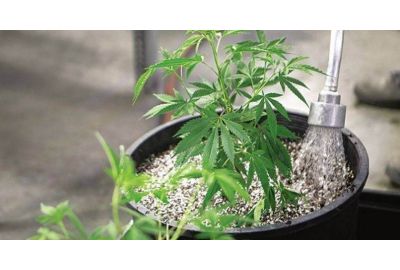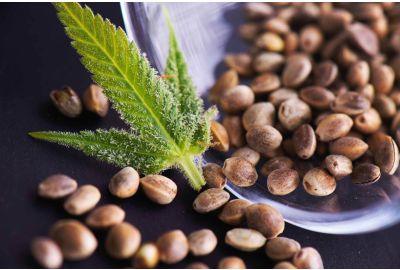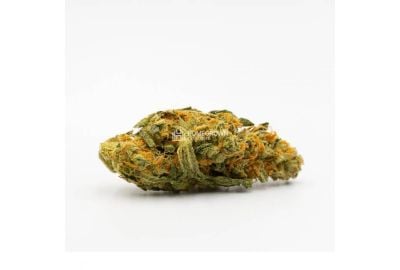Defoliating Autoflowers: Why, How & When
Ever heard the saying, "new hair, new you"? Well, this phrase applies to your cannabis plants, too. Defoliating your autoflowers can deliver fatter, juicier buds, a bigger harvest, and healthier greenery.
But I thought defoliation was for photoperiod plants only? Not necessarily. Pruning, trimming, and topping autoflower plants is an accepted (if lesser-known) practice, especially for the bushier autos like Gorilla Glue. Experienced auto growers have mastered these techniques, knowing how and when to remove leaves, branches, and nodes from autoflowers, without harming the plants.
While topping and training are subjects for another article, this guide should help you learn to successfully defoliate autoflower cannabis plants like a pro.
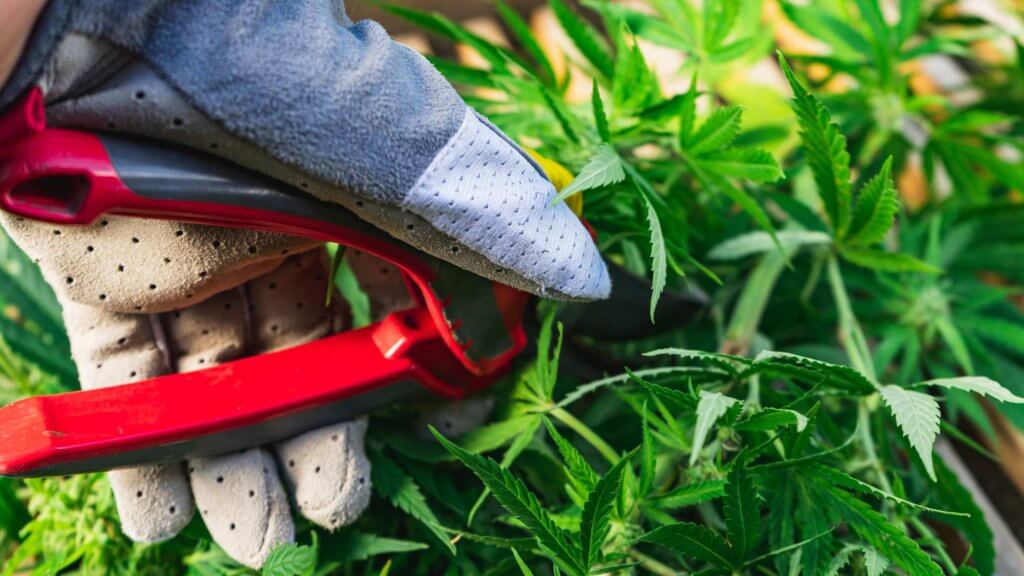
What are the advantages of defoliating autoflowers?
Defoliating autoflowers can increase your chances of achieving a bigger, healthier yield. Here are some advantages of defoliating your plants:
- Removing larger leaves at specific times can help the plant focus its energy on flower production.
- Dense foliage can create small microclimates within the plant that make for favorable breeding grounds for pests and mold.
- When you defoliate autoflowers, you get better canopy ventilation, ensuring the branches at the bottom enjoy more light and air-flow.
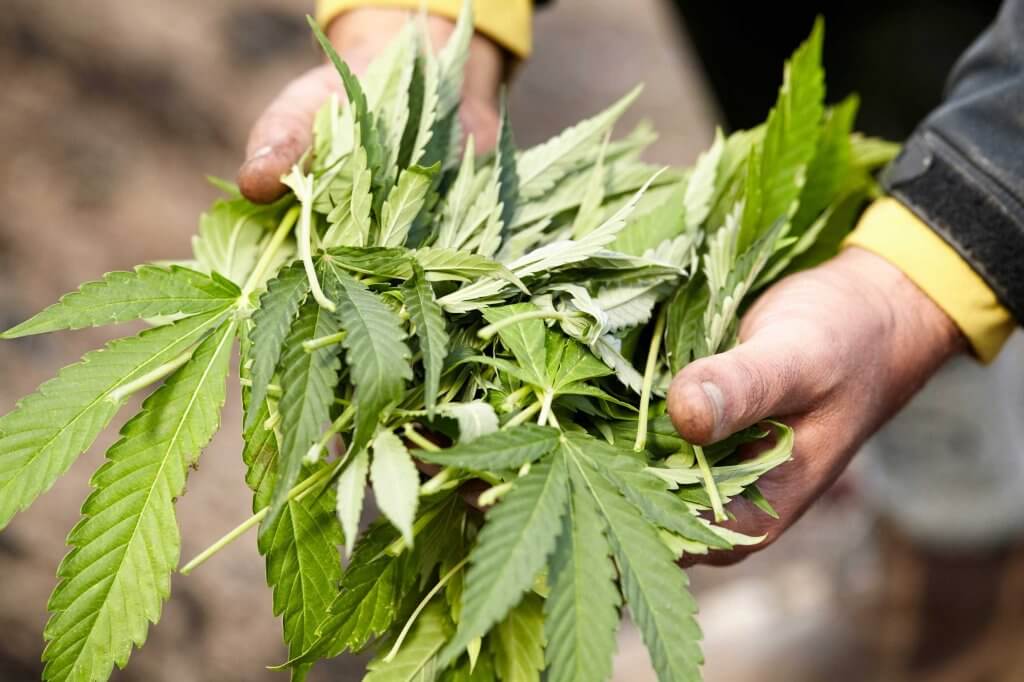
When should you defoliate autoflower cannabis plants?
Knowing when to defoliate autoflowers is the key to success, whereas poorly timed defoliation can have disastrous consequences.
The best tip we can give you is to avoid any defoliation until your autos are at least mid-veg. This will vary from plant to plant, since flower sites are not present in the vegetative stage, and it’s a tricky thing to judge with autos. You need to use your intuition here… defoliating should be done only as needed, focusing on airflow and uniformity. You don’t want to stress the plant out while it's still developing.
Some growers swear by constantly defoliating throughout the plant's entire life (there are many different styles of growing). We’d instead advise one or two intensive defoliation sessions, rather than frequent defoliation, avoiding the period where the plant is transitioning into flower.
Due to the super-quick vegetative cycle* of autos, inexperienced growers might be better off defoliating autoflowers only during flowering. The first defoliation can happen several weeks into flower, and the second around ¾ of the way through flowering.
This timing helps the plant focus all that late energy into flower production. Interestingly, this technique is also practiced in many other agricultural crops such as cotton.
*With regular cannabis typically two defoliation events should occur during flower, on days 21 and 42.
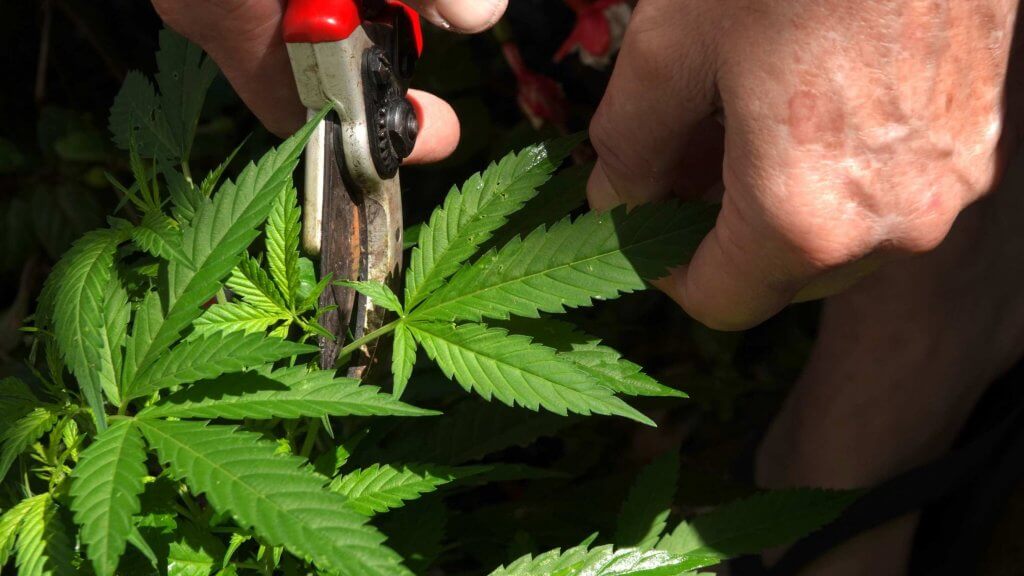
Is it ok to defoliate autoflowers late into flower?
The final late stage, flushing and ripening, shouldn't need too much of a hands-on approach, and removing the fan leaves won't affect the quality of the buds. In the latter stages of flower, most of the nutrients will be metabolized and utilized, and you may witness a "fading" of color in the leaves to signify this.
That said, you should avoid defoliation if the plant shows signs of stress or deficiencies at this late stage.
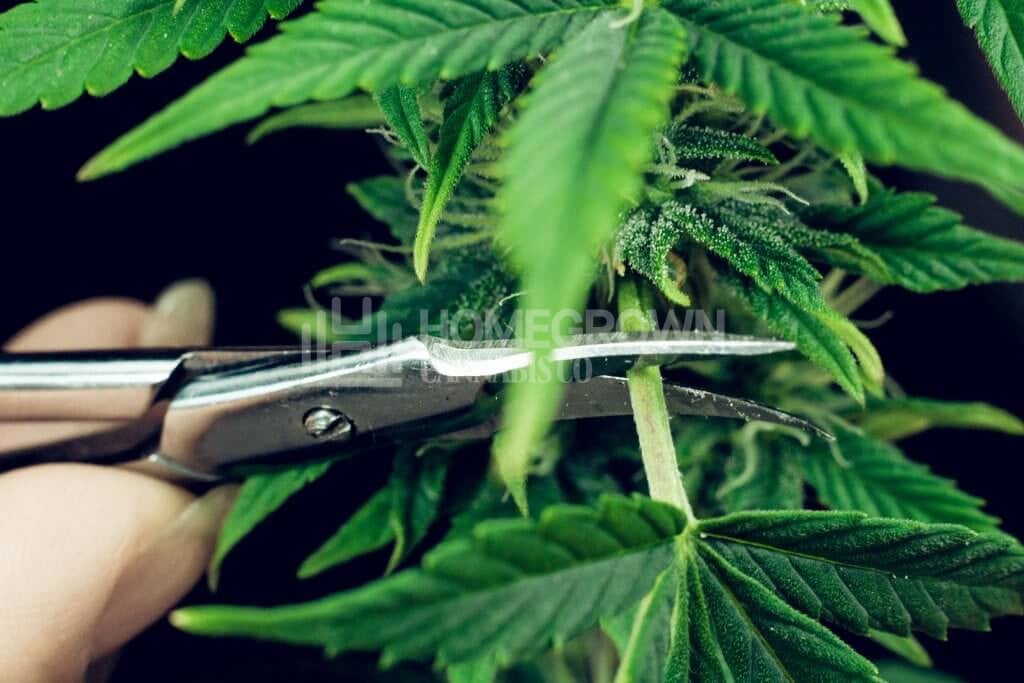
What equipment do you need to defoliate autoflowers?
You don't need much, and you'll likely have most of the tools lying around. The most important item is a good pair of scissors. Most growers use the fine tipped friskers (straight blades). Razor blades work well, but are kind of unnecessary, it’s safer to use your hands.
Scissors are a good option for a few reasons:
- You'll get a more accurate trim, thanks to the precision of the blades.
- Messy cuts from plucking with your fingers can take longer to heal. A smooth cut from a sharp blade helps the plant to recover faster.
- Scissors are generally more hygienic (when sterilized).
You also need ethanol-based rubbing alcohol to keep your scissors / razors clean. Bear in mind cannabis plants can get diseases from unsterilized equipment. Always wash your hands or use clean gloves when defoliating autoflowers.
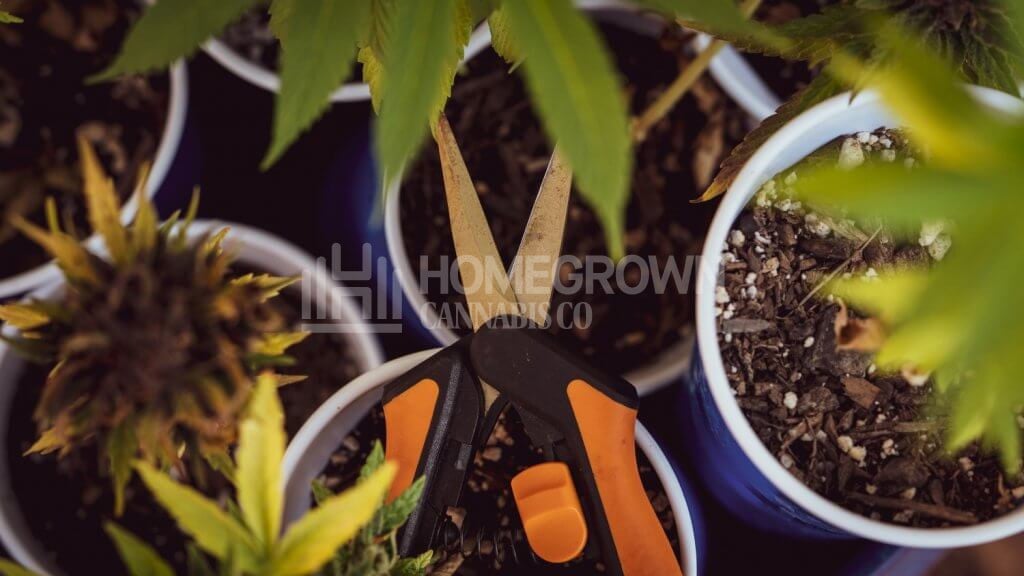
How to defoliate autoflowers
The technique of defoliation for autos is exactly the same as for any other type of cannabis. But we must stress again: when defoliating autoflowers you should pay close attention to the timing, strategize these events. Because of their short life spans, they’re unable to recover from heavy pruning like photoperiod cannabis plants.
Remember, the aim of autoflower defoliation is to help your plants concentrate the energy and nutrients only where it's needed. Each time you defoliate and whichever cultivar you use, you should use the following steps.
Let’s get defoliating!
The huge fan leaves are usually as big as your hand and will have the longest stems. They can prevent light from reaching the middle and lower areas. We remove them to increase light penetration and encourage as much bud development as possible.
- The first step in autoflower defoliation is to gently remove the larger fan leaves at the top of the plant. Snip or remove them as close to the branches as possible. Work your way down the plant, gradually removing the larger leaves in stages.
- Remember, we’re not completely stripping the plant. We want to remove only the leaves that are blocking light from the middle and lower canopy. A bald plant will very soon be a dead plant. You can also bend and tuck the larger leaves out of the way, rather than removing them completely.
- And what do you do with the leaves you remove? Firstly, take them out of the growing area. It’s excellent practice to keep your area as clean and uncluttered as possible. Second, why not add them to your compost? Or make a cannabis tea? Anything is better than simply throwing them in the trash!

Autoflower defoliation do's and don'ts
Now you know how to defoliate autoflowers, let's talk about what you should and shouldn't do. Defoliation is simple once you get the hang of it, and we're sure you'll be trimming autoflowers like a pro in no time. Here's a short list of guidelines to help you along:
Do's:
- Handle the leaves with care.
- Use sterile scissors and clean hands when defoliating autoflowers to prevent infections in your plants.
- If you want to perform a late defoliation, only remove dead leaves and those that have stopped growing.
- Allow at least one week before each trimming session to avoid stressing your plants out.
Don'ts:
- Never trim healthy leaves during the late flowering phase, when buds are fully developed.
- Refrain from removing too many leaves at once. Always trim a few leaves at a time and check your plants reaction.
- Defoliation during the vegetative phase is perfectly fine but don't perform it just before your plant transitions to the flowering period. If you do, you might cause unnecessary stress and negatively affect your harvest.
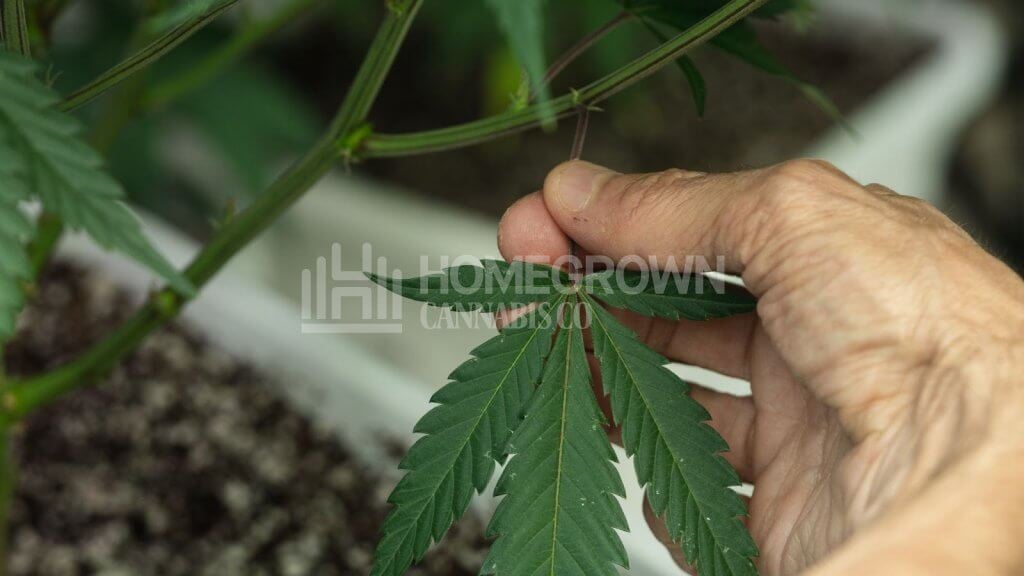
10 x tips for successful autoflower defoliation
- Timing: The ideal time to defoliate autos is during the late vegetative stage or just as flowering begins.
- Start Small: Start by removing only a few leaves that are either dead, dying, or blocking light to significant bud sites. Observe how the plant responds over a few days before proceeding.
- Avoid Over-Defoliation: This is a common mistake. Autoflowers have a set life cycle, and over-defoliation can stress them, leading to stunted growth or a reduced yield. Never remove more than 20 - 30% of foliage in a single session.
- Focus on the Lower Canopy: Removing leaves and small branches that receive little light can help redirect the plant's energy to the top colas, improving overall yield.
- Use Clean, Sharp Tools: Always use sterilized scissors or pruning shears to make clean cuts. This reduces the risk of infection and promotes quicker healing.
- Monitor Plant Health: After defoliation, monitor your plants closely. Healthy, vigorous growth indicates a positive response, while signs of stress may suggest you've gone too far or that your plant is not recovering well. As Kyle Kushman always says, learn the language of your plants!
- Limit Defoliation Sessions: When trimming autoflowers, one or two defoliation sessions per cycle is usually sufficient.
- Be Cautious with Your Nutes: After defoliation, plants can be more sensitive to nutrients. Watch for nutrient burn and adjust feedings accordingly.
- Optimize the Environment: Make sure the environmental conditions (temperature, humidity, ventilation etc) are fully optimized after defoliation. You wouldn’t want to recuperate from an operation in a cold, leaky barn… neither will your plants.
- Keep on Growing: If you're new to growing autoflowers or defoliating, start with a conservative approach. Mistakes will happen but they can be great lessons, just make sure you learn from them!
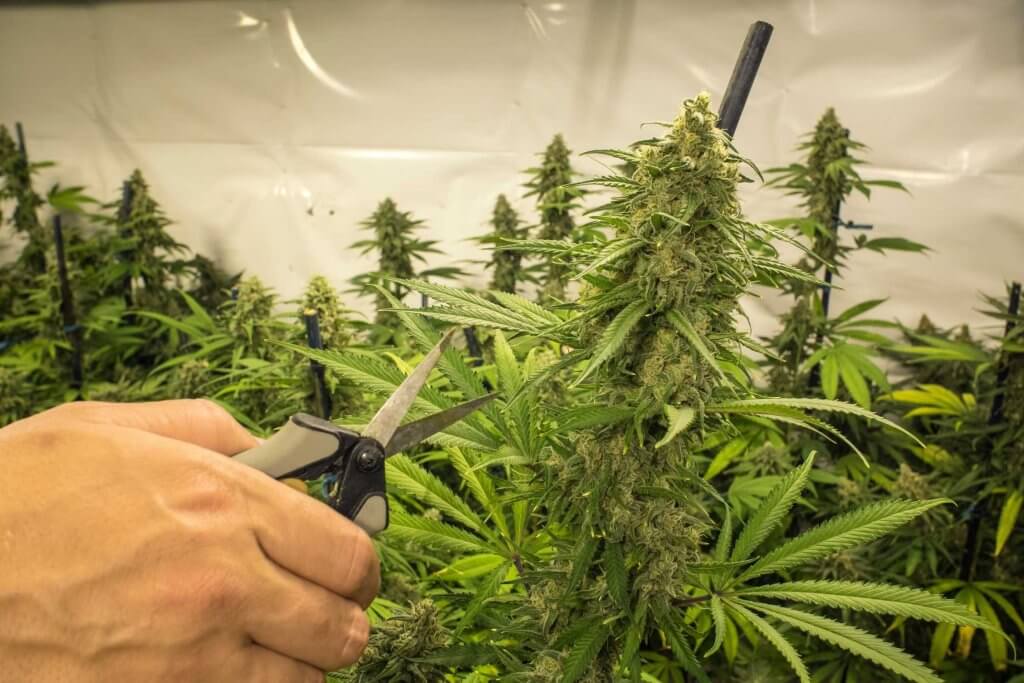
5 x hardy autoflowers that respond well to defoliation
- Northern Lights Autoflower: Northern Lights Auto boasts a super-compact structure, with a dense canopy that can benefit from selective leaf removal. Targeted defoliation can improve light penetration and air circulation around the buds. Northern Lights Auto is also pretty resilient and tolerant of mistakes, provided they’re not too catastrophic!
- Amnesia Haze Autoflower: This sativa-dominant cultivar is known for her vigorous growth and can become quite bushy, quite quickly. This rapid growth makes her a good candidate for defoliation, as she’s likely to recover quickly from the stress.
- Blue Dream Autoflower: This cultivar combines robust growth with a relatively open structure, making her an ideal pick for defoliation. Careful removal of some of the fan leaves will help ensure all parts of the plant receive adequate light.
- Gorilla Glue Autoflower: Known for her super-sticky buds and strong growth, Gorilla Glue Auto is another cultivar that can handle careful defoliation. Her vigorous vegetative growth allows for the strategic removal of leaves to improve airflow and light exposure, without stressing the plant too much.
- Girl Scout Cookies Autoflower: With her rapid growth and tendency to produce a thick canopy, GSC Auto is well-suited to growers looking to experiment with defoliation. This strain can benefit from the removal of select leaves to ensure light reaches the flowering sites, encouraging more uniform bud development throughout the plant.
Autoflower defoliation: A good haircut changes everything
Defoliating autos can make a world of difference to their health, but you MUST time it correctly. Bear in mind also that different strains have different needs, and not all marijuana plants require defoliation. If you’re not confident, don’t defoliate.
If you do want to give it a go, you’ll be giving yourself the best chance of success by choosing the best seeds. And who sells the best seeds? We do! Buy cannabis seeds from Homegrown Cannabis Co. and join 1000s of happy customers.
Feel free to share this article on your social media accounts and spread these tips with your fellow cannabis enthusiasts. Follow our social channels and subscribe to our newsletter, where we spill the seeds on many other interesting topics.
About the author: Derek LaRose
Also known as Kronic from The Cannabis Kronicles, Derek LaRose is a young ambitious cultivator and a staple educator for indoor cultivation.
